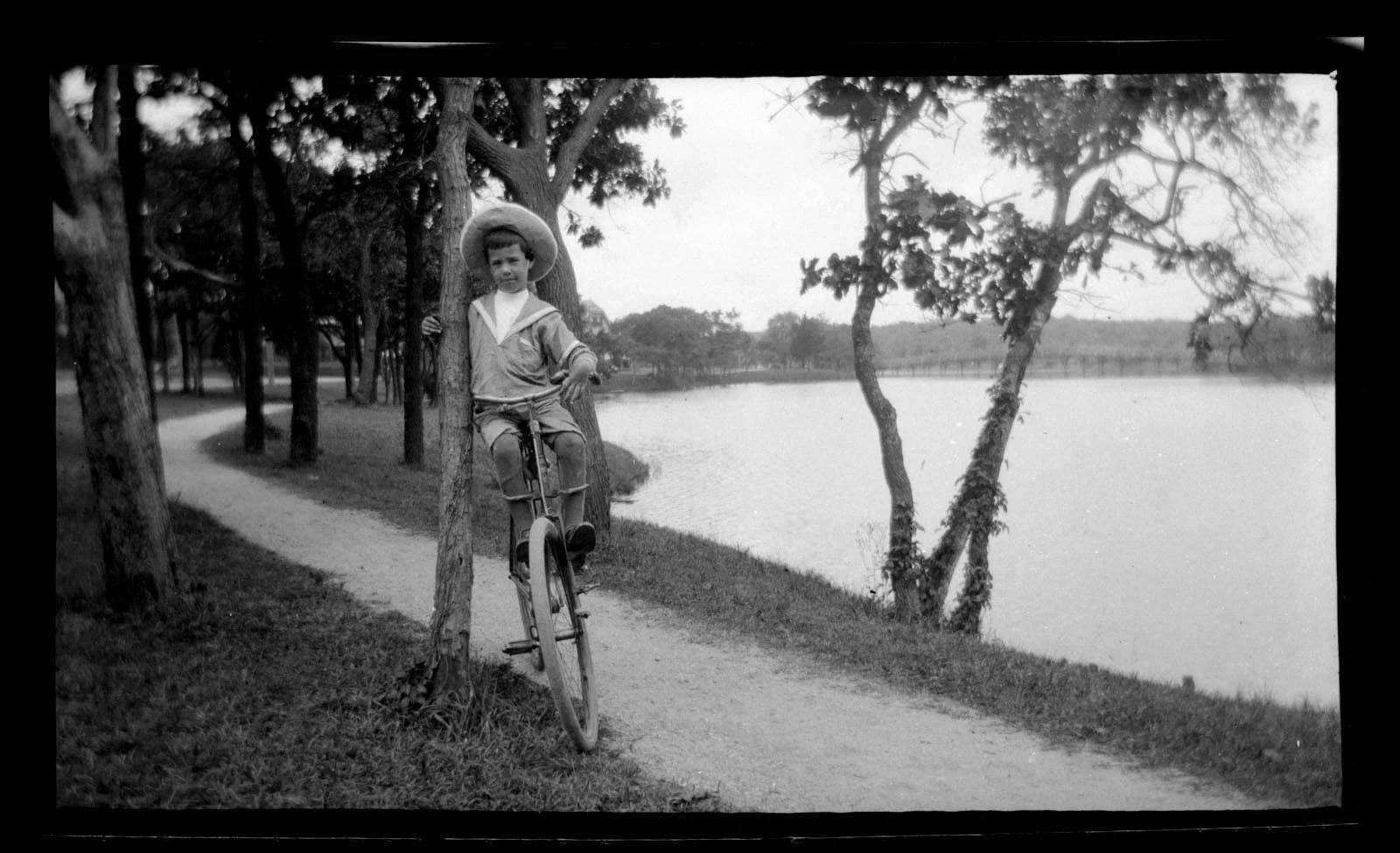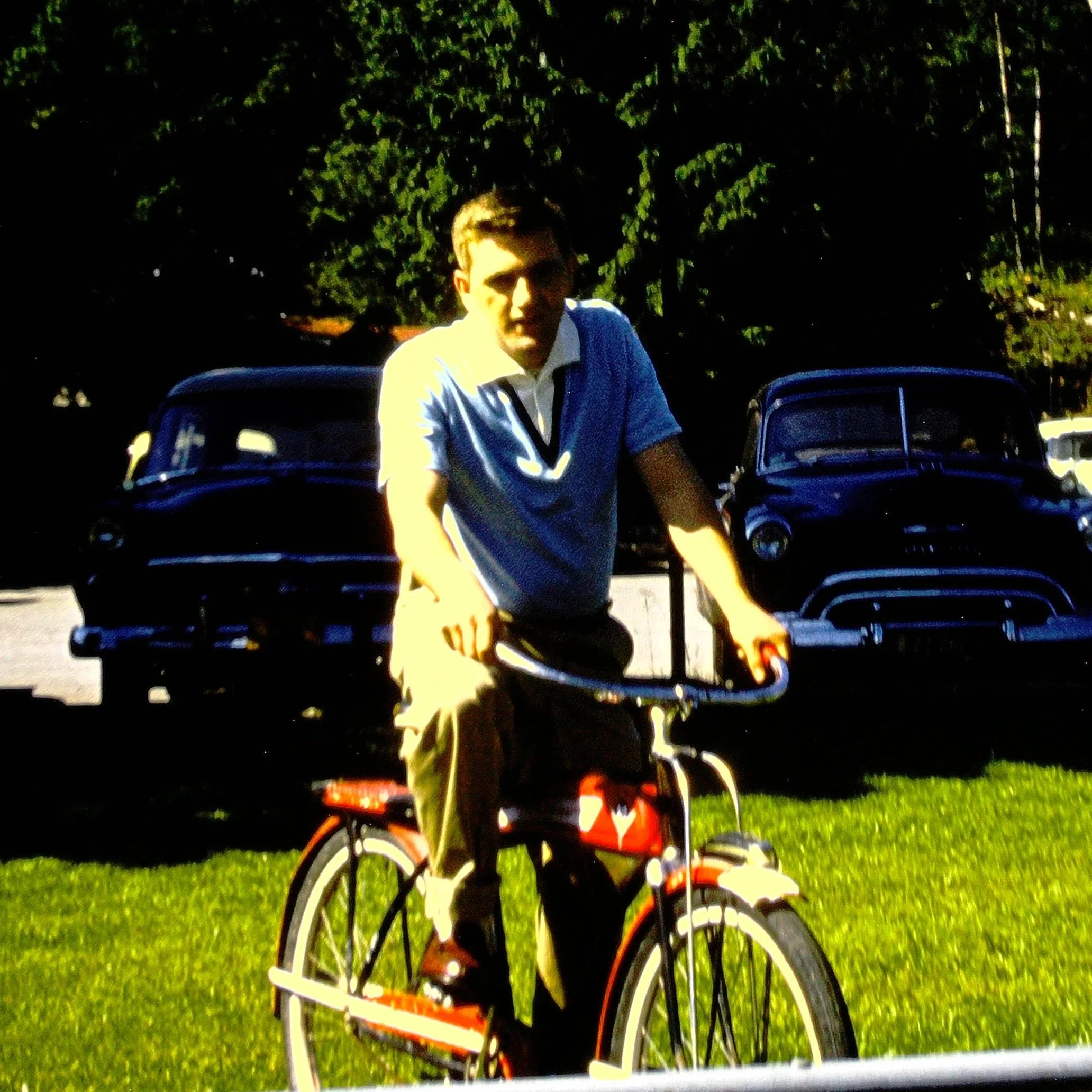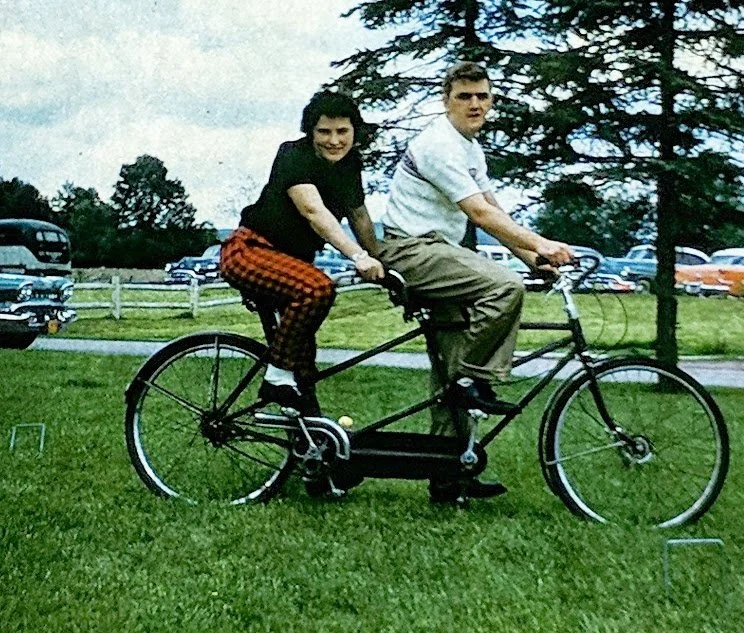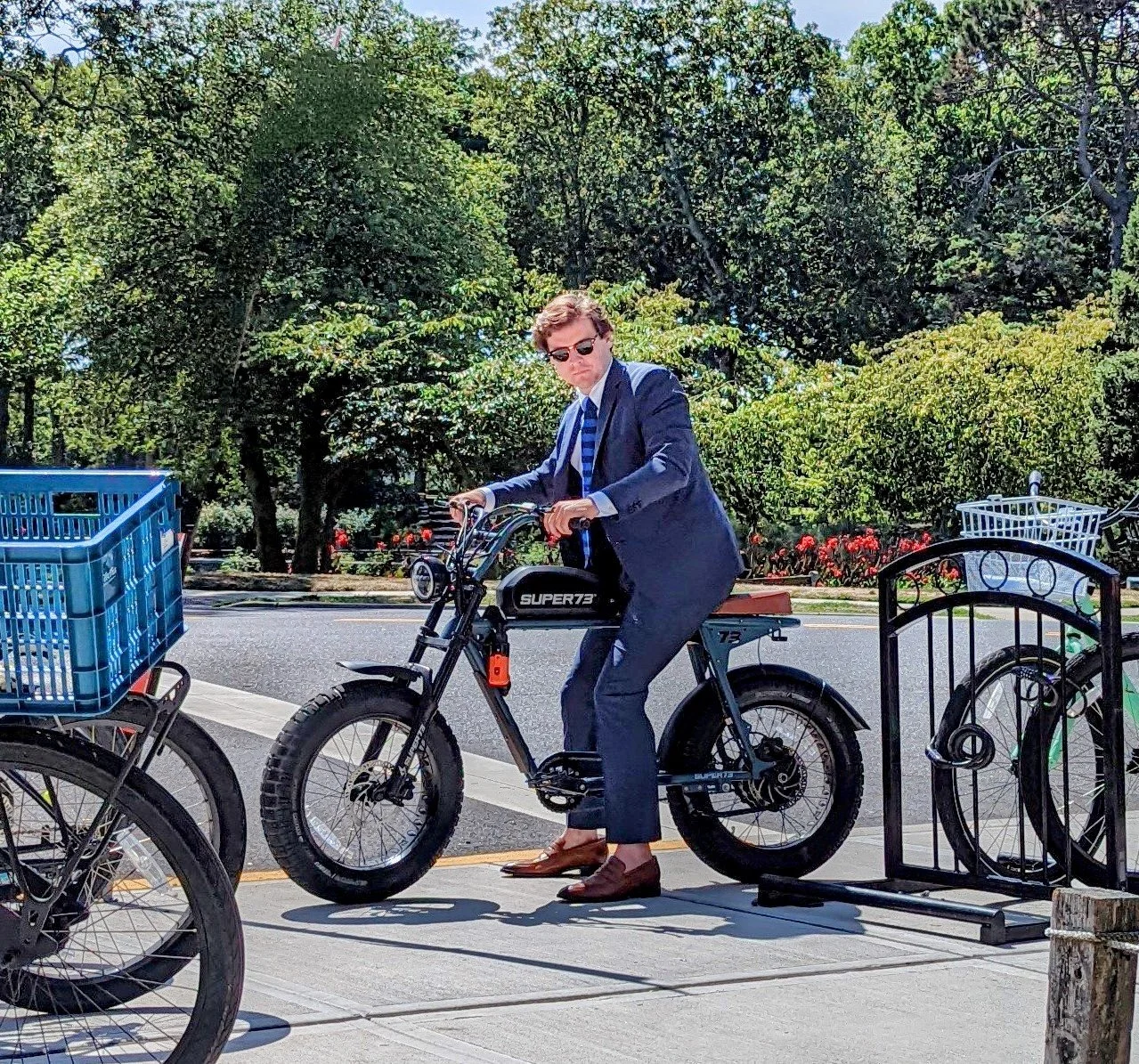Riding bikes at the shore is a long tradition. The flat terrain lends itself to long and easy rides.
Marriott Morris captured his boys and a cousin riding near the Brielle train station on Fiske Ave. in 1912.
Morris photos provided by the Library Company of Philadelphia Marriott C. Morris Collection
Early cycles were dangerous and uncomfortable machines. The earliest were called “boneshakers” for their rough ride. Velocipedes, as their manufacturers called them were made of stiff frames and wooden wheels. They were replaced by the High Boy or the Penny & Farthing. The high front wheel provided speed and more comfort with flexibility, but falls were dangerous, and near impossible to navigate with skirts. An explosion of riders came with the invention of the safety bicycle in 1888. Two same-sized wheels and a sprocket and chain is still the predominant design today. Women in particular were liberated to travel long distances without the need to be driven in a carriage. Creative methods for tying the petticoats and bloomers or wearing knickerbockers led to custom riding wear that would not get tangled in the chain. Some even credit the bicycle for aiding in liberating women from some of the social restrictions Victorian society imposed.
An 1887 image of one of Marriott Morris’ bikes. Below is his riding club, all Haverford classmates in 1887
Sea Girt 1908. Bicycles were convenient and less expensive alternatives to riding a horse.
Spring Lake 1907. Note the foot bars for carrying the young Marriott Morris Jr. on his father’s bike.
As motor cars replaced the horse and carriage, bicycle popularity waned for a bit, but the 1930s depression returned the bicycle to popularity with the introduction of the cruiser. With a look like a motorcycle, including a center imitation tank and handlebars facing the rider, and fat tires to handle different road conditions, it became a staple recreational bike. It was also a way for those without money for gas to get around. Other models, like the tandem shown below in 1958, changed little from 1890s designs.
The cruiser lost ground to a number of fads starting in the 1960s. In the 1970’s the thinner English racer attracted adult riders with multiple gear speeds. Long distance fitness biking became popular and racers emulated the rising popularity and tech of the Tour de France. “Wheelie bikes” or Schwinn Sting Rays took over the kid’s market. Their banana seats and sissy bars emulated the motorcycles used by Bobby “Evel” Kinevel a motorcycle daredevil. The trend then shifted to BMX-style bikes and then mountain bikes.
But in California, Recycled Cycles in Newport Beach began restoring old cruisers from garages and selling them as “Beach Cruisers” in 1976. First used by surfers, the demand for vintage bikes eventually outpaced supply and the cruiser returned to the market. Today our schools, beach entrances, and downtowns are cruiser heaven, and many kids’ best memories are of carefree summers going for ice cream on their bikes.
50’s cruiser
You look sweet upon the seat of a bicycle built for two
The cruiser dominates the beachfront here in Sea Girt
The best way to visit downtown Spring Lake
Bicycles are not without their controversy. Boardwalkers generally don’t like bikers, and each town has rules limiting the hours for bicycles on the boards to less congested times. E-Bikes are a newer and more troubling addition to the conversation. While the motors assist riders, they also pose more problems. Public Safety Officers are still sorting out the best rules to manage these vehicles and most boardwalks prohibit them outright. As you drive around the shore, share the road. The bicycle, and the cruiser in particular is more popular than ever.
Bike on the Boardwalk, but only during biking hours
E-Bikes are controversial because of their speed and power.
Enjoy the ride











